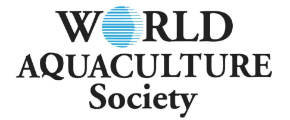THE STATUS OF WHITE SEABASS Atractoscion nobilis AS A COMMERCIALLY READY SPECIES FOR MARINE U.S. AQUACULTURE
The white seabass is a member of the family Sciaenidae, which includes croakers and drums. Along the west coast of the USA, white seabass is the largest croaker and very popular as a sport and food fish. The culture of this species has a history of more than 30 years, with the primary interest to date being for stocking as supported by fishermen. Growout to a market size and test marketing of cultured seabass has been done from sea cages in California and Baja California, Mexico.
White seabass are induced to spawn by manipulating photoperiod and water temperature within a range of 10-14 hr of light and 14-18°C, respectively. Females mature in 4-5 years and may grow to 44 kg. Eggs are spawned in batches of 100K eggs per kg of female body weight, with 7-10 day "resting" intervals. The eggs are relatively large (1.2 mm diameter) and pelagic. The hatchery phase for seabass uses standard intensive methods for marine fish starting with enriched Artemia. Application of green-water and feeding of rotifers is not required. Culture systems are designed to reuse the water and maintain good control over water temperature and biosecurity. Survival rates from egg to fully weaned juvenile at 50 dph are consistently high at 20-40%. Among the more common infectious diseases affecting white seabass are (1) protozoans, primarily Ichthyobodo sp., Uronema sp., Hexamita sp., Cryptocaryon irritans; (2) bacteria, primarily Vibrio spp. and Flexibacter maritimus; and (3) invertebrate parasites, primarily monogenean trematodes and copepods (Caligus sp.). Viruses such as herpes-type and viral nervous necrosis (VNN) have also been identified. White seabass are highly susceptible to gas bubble disease even at total dissolved gas levels of at or below 102%.
The aquaculture potential for white seabass is generally good, although growth rates are relatively slow in cooler ocean waters. At 18 months fish have ranged from 0.6 to 1.0 kg depending on water temperature. An established market exists for wild fish, but due to fishing regulations their size is larger (2.0 kg minimum) and seasonal (early summer). Once the ocean is available for cage culture in the USA, those interested in farming white seabass will benefit from selective breeding programs and development and approval of more health management tools.













